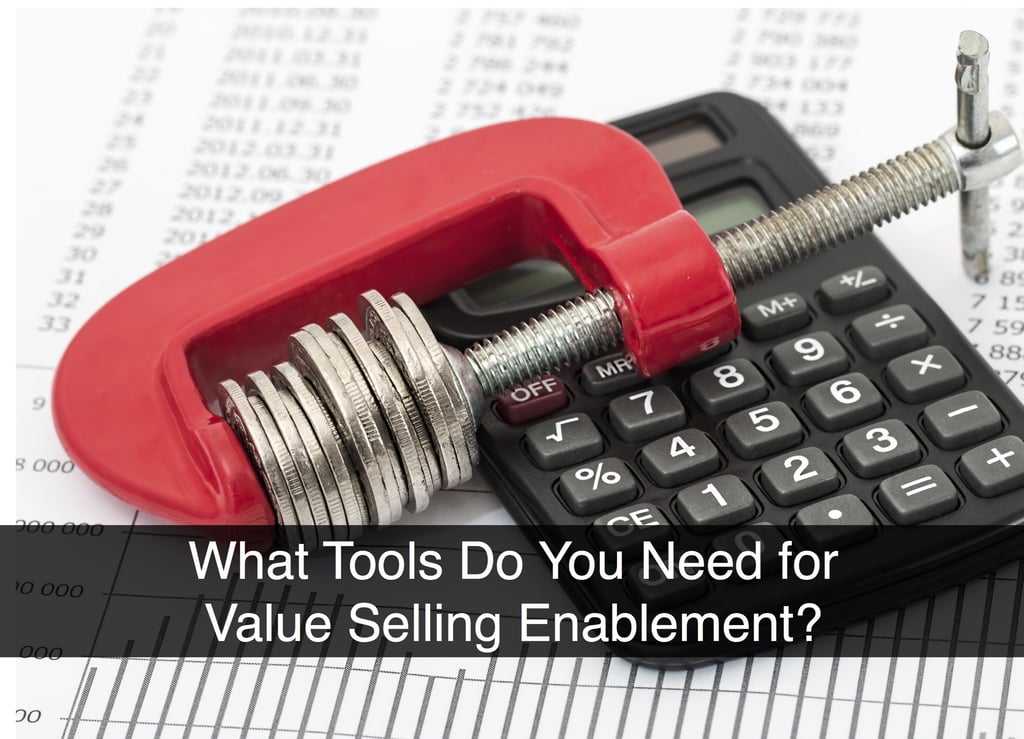
Strong sales enablement encourages positive, productive behaviors that help sales reps sell better, and sell more. Typical resources include CRM and marketing automation systems that track activity and progress through the sales cycle. Beyond that, every organization takes a different approach to supporting sales efforts based on the needs of their sales team.
What does your organization do to simplify and accelerate the sales process? What tools does your sales team have to help demonstrate the value of your product?
One of the most challenging discussions a sales rep may have is around budget. Many organizations follow BANT (Budget, Authority, Need, Timing) as a discovery method. Budget can be a tough discussion, especially when a prospect has not set aside a budget and seriously, most don’t. This can be particularly true when you are selling a newer solution that wasn’t on their radar during their last budgeting cycle.
As a sales enablement professional, you can help your sales organization navigate this challenge by leveraging an ROI tool. Imagine empowering your sales reps with the ability to easily demonstrate tangible ROI for a potential purchase. An ROI tool also helps prospects justify the investment in your offering by providing strategic insights and clearly articulated solution value.
Here’s an in-depth look at four approaches to using an ROI tool to sell persuasively, help prospects appreciate the value of your product, justify the purchase and in the case of customers, increase customer retention.
1. Discover Strategic Benefits
Populating an ROI tool is a great way to start a conversation about the strategic benefits of your product. While gathering pertinent information and statistics, your questions can address pain points and prompt a deeper discussion of how your prospect does business. Leveraging this information through the sales cycle will reinforce the product benefits prospects can expect.
This discovery process can reveal areas needing refinement, and gaps to be addressed with new or improved processes. And as you learn more about their business, you can add data-points to the inputs, and ask additional strategic questions to help further refine their business practices.
Use this dialog to emphasize how your solution meets current and future needs, and set a positive tone for subsequent stages of the sales process.
2. Make a Proposal They Can’t Refuse
Leveraging an ROI tool can easily and professionally link the prospects’ needs to your product’s solution. Including an ROI report within the proposal will re-emphasize the opportunities and challenges identified through the discovery phase, and make direct links to the benefits of your product.
Employ an ROI tool to quantify solution value by calculating payback in a timeframe that makes sense to prospects and customers. The results can persuade the CFO to approve the sale immediately, or inform the budget process so that needed funds are allocated and available at the desired time. Access to calculation details instills confidence in the results, and professional presentation demonstrates the professionalism of your organization.
3. Quantify the Cost of Doing Nothing
When a prospect delays or chooses not to make a purchase decision, an ROI tool can assist yet again if it demonstrates the cost of NOT moving forward. Organizations lose opportunities because of inertia and a poorly functioning status quo. Although the prospect believes holding off saves money, an ROI tool allows you to quantify how buyer indecision actually costs more in the long run.
In addition to presenting the payback of your product compared to their current situation, the tool objectively reveals the expense and inefficiency of their current operation, and quantifies how costs will multiply while they delay addressing the deficiencies.
4. Increase Customer Retention
When it’s time for a customer to renew a contract or service agreement, an ROI tool can reinforce the value of your solution and facilitate renewal. Customer success managers and account executives can reach out proactively to address any questions or hesitation that might delay an automatic renewal. Similarly, an ROI tool is often included in regularly scheduled meetings with key accounts to ensure the customer is benefitting from your product.
Upselling and cross-selling is also simplified through the use of an ROI tool. As new needs are discovered, the tool can report on value realization for the current product(s) in combination with one or more new modules or solutions. By providing a credible report that shows how quickly they can recoup their investment, you can spur the purchase decision process and further cement your relationship.
Conclusion
Leveraging an ROI tool can empower your prospect to justify budget approval for your product, thus accelerating your sales cycle. After the sale, referring back to the documented ROI can continue building customer confidence that they are benefiting from your product. When used as part of a comprehensive value selling strategy and incorporated into your full sales enablement toolkit, you will strengthen your team’s ability to more readily persuade and inform prospects through every stage of the sales process.
ROI and value selling tools can significantly accelerate your sales cycle, giving your sales reps the confidence to translate the intangibles of value into numbers that are real, impactful, and specific to their organization.









